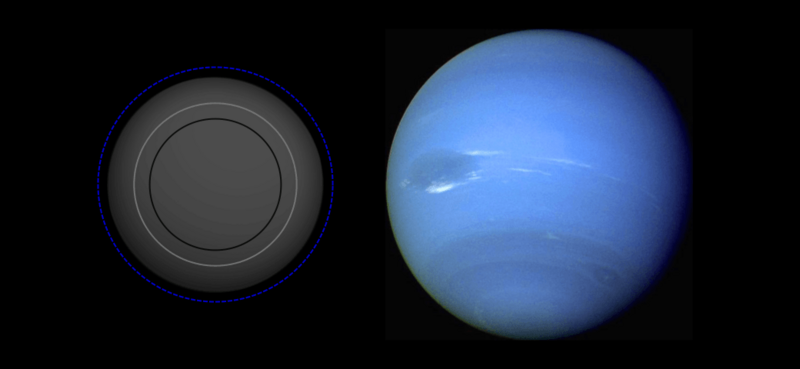Archivo: Exoplanet Comparison Gliese 581 b

Descripción: Comparison of several possible sizes for the exoplanet Gliese 581 b with the Solar System planet Neptune, using approximate models of planetary radius as a function of mass[1] for several possible compositions, based on mass reported in the Open Exoplanet Catalogue[2] as of 2015-11-14. Models include: water world with a rocky core, composed of 75% H2O, 3% Fe, 22% MgSiO3 hypothetical pure water (ice) planet, the largest size for Gliese 581 b without a significant H/He envelope rocky terrestrial "Earth-like" planet, composed of 67% Fe, 32.5% MgSiO3 hypothetical pure iron planet, Gliese 581 b's theoretical smallest size Gliese 581 b is not likely to be smaller than the iron planet, and will be considerably larger than the water planet if significant H or He is present. For non-transiting planets, all modeled sizes will be underestimates to the extent that the planet's actual mass is larger than the reported minimum mass. ↑ Seager, S.; M. Kuchner, C. A. Hier-Majumder and B. Militzer (2007). "Mass–radius relationships for solid exoplanets". The Astrophysical Journal 669: 1279–1297. DOI:10.1086/521346. Retrieved on 2015-11-14. ↑ Open Exoplanet Catalogue (2015-11-14). Retrieved on 2015-11-14.
Título: Exoplanet Comparison Gliese 581 b
Créditos: Trabajo propio, incorporating public domain images for reference planets (see below)
Autor(a): Aldaron, a.k.a. Aldaron
Términos de Uso: Creative Commons Attribution-Share Alike 3.0
Licencia: CC BY-SA 3.0
Enlace de Licencia: https://creativecommons.org/licenses/by-sa/3.0
¿Se exige la atribución?: Sí
Usos del archivo
La siguiente página enlaza a este archivo:

